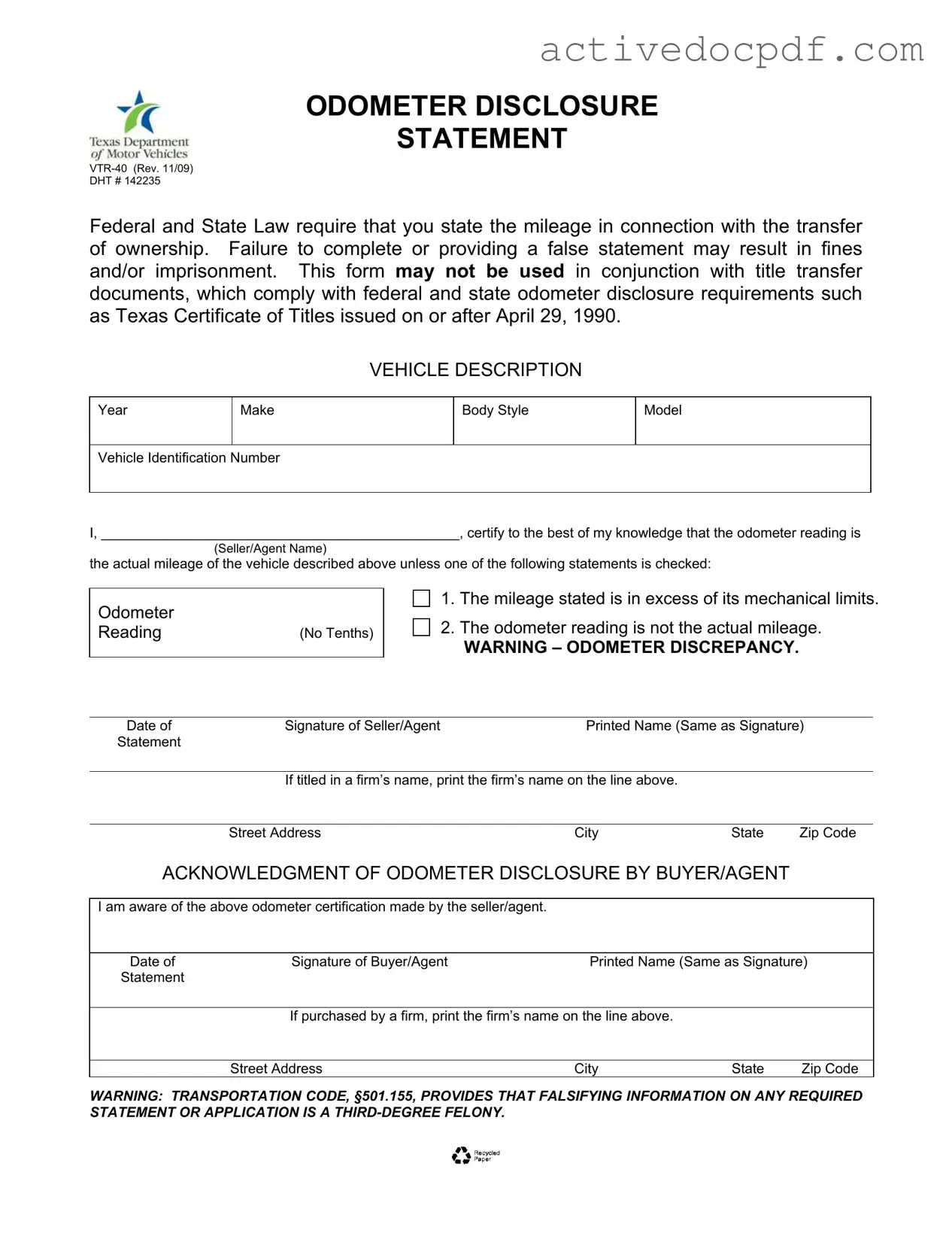The Texas Odometer Statement form, known as VTR-40, is a document required when transferring ownership of a vehicle in Texas. It serves to disclose the vehicle's mileage at the time of sale, ensuring that both the seller and buyer are aware of the odometer reading. This form is crucial for preventing fraud and protecting consumers.
Both the seller and the buyer, or their agents, must complete the Texas Odometer Statement form. The seller certifies the odometer reading, while the buyer acknowledges the disclosure. This mutual agreement helps to maintain transparency during the vehicle transfer process.
To fill out the Texas Odometer Statement form, you will need the following information:
-
Year of the vehicle
-
Make of the vehicle
-
Body style
-
Model
-
Vehicle Identification Number (VIN)
-
Odometer reading (without tenths)
-
Names and addresses of both the seller and buyer
Failing to complete the Texas Odometer Statement form accurately can lead to serious consequences. If the form is not filled out properly or if false information is provided, it may result in fines or even imprisonment. It is essential to ensure that all information is truthful and complete to avoid these penalties.
No, the Texas Odometer Statement form cannot be used in conjunction with other title transfer documents. It is specifically designed for situations where the Texas Certificate of Title was issued before April 29, 1990. For titles issued on or after that date, the odometer disclosure requirements are incorporated into the title itself.
Falsifying information on the Texas Odometer Statement form is a serious offense. According to Texas law, specifically Transportation Code §501.155, providing false information is classified as a third-degree felony. This can lead to significant legal repercussions, including imprisonment and substantial fines.
Yes, the odometer reading must be stated without tenths. This means that you should only report whole numbers when indicating the mileage. This requirement helps standardize the information and reduces confusion regarding the vehicle's actual mileage.
What should I do if I suspect odometer fraud?
If you suspect that odometer fraud has occurred, it is important to take action. You can report your concerns to the Texas Department of Motor Vehicles or local law enforcement. Providing as much information as possible, including the vehicle's VIN and details of the transaction, will assist in the investigation.
The Texas Odometer Statement form can be obtained from the Texas Department of Motor Vehicles website or local DMV offices. It is also advisable to check online resources or visit authorized vehicle dealerships, as they may provide the form as part of the vehicle sale process.
